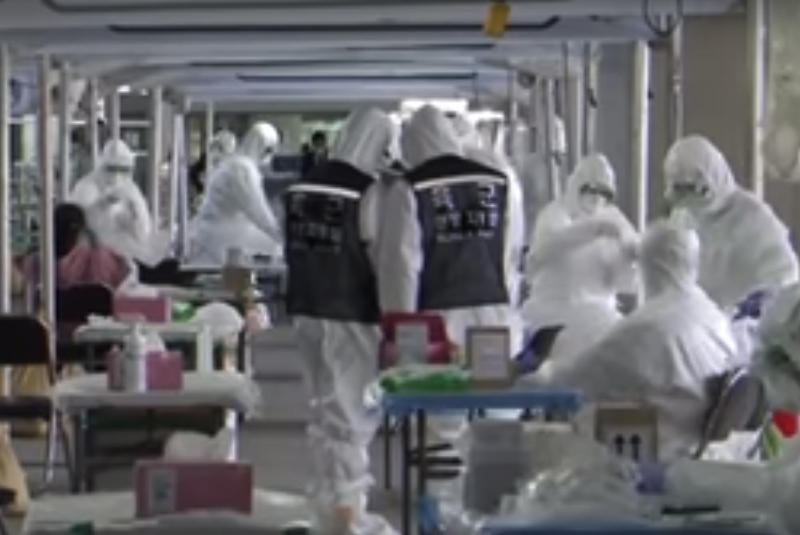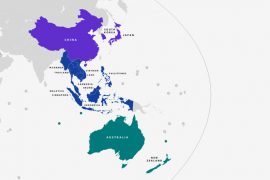A pneumonia-like illness is surging in Northern China. Since mid-October 2023, the World Health Organization (WHO), which has been monitoring data from Chinese surveillance systems, has identified an increase in respiratory illness in children in northern China.
On November 13, 2023, China’s National Health Commission reported a nationwide increase in the incidence of respiratory diseases, predominantly affecting children. On November 22, 2023, the World Health Organization requested information from China about this surge. Chinese health authorities have since said the outbreak is due to a number of respiratory pathogens. Chinese authorities attributed this increase to the following reasons:
- lifting of COVID-19 restrictions
- arrival of the cold season
- due to circulating known pathogens such as Influenza, Mycoplasma pneumoniae, respiratory syncytial virus (RSV), and severe acute respiratory syndrome coronavirus 2 (SARS-CoV-2).
Given the COVID-19 experience, it would be pertinent to understand and learn more about the pathogens causing this uptick in respiratory illness. Also, it would be wise to ask a pertinent question: Do we need to be concerned that any of these have the potential to cause another pandemic?
Mycoplasma pneumoniae
Mycoplasma is a bacteria that has caused outbreaks of respiratory illness in China since June this year. Mycoplasma pneumonia is known to affect children more than adults. However, it is usually treated with antibiotics; hospitalisation is not common. It could lead to a phenomenon called “walking pneumonia”, which is when the chest X-ray looks much worse than the patient appears.
In Taiwan, however, reports have suggested a high antibiotic resistance to Mycoplasma, possibly explaining why it’s causing more hospital admissions.
Influenza
During the initial stages of the COVID pandemic, Influenza fell to very low levels, largely because of masks, physical distancing and other measures. But as people stopped wearing them, flu infections have tended to bounce back.
Influenza is most severe in children under age five and the elderly; perhaps this may be contributing to hospitalisations among children.
Respiratory syncytial virus (RSV) & Adenovirus
RSV typically circulates during winter in temperate climates, much like Influenza. RSV is spread through respiratory secretions when an infected person sneezes or coughs. It’s the major cause of lung infections in children, commonly causing bronchiolitis.
Symptoms of RSV include a runny nose, cough, reduced feeding and fever. Complications include wheezing and difficulty breathing, which can develop into pneumonia.
Severe cases occasionally lead to death, predominantly in very young infants. Almost all children have had an RSV infection by age two. Still, infants in their first year of life are more likely to experience severe infections requiring hospitalisation because their airways are smaller. Babies have also not built up immunity to RSV from previous years (we call this being RSV-naïve).
RSV can be severe in children. Like Influenza, it was minimal during the first two years of the pandemic. But it’s now circulating widely. Adenovirus, which can cause a range of syndromes, including gastroenteritis and a flu-like illness, has also been reported as contributing to the current outbreak in China. There are reports of children vomiting and pictures of children receiving IV fluids, presumably for dehydration as a result of gastroenteritis.
Earlier in the Summer, Australia also witnessed a surge in RSV in children.
The role of COVID
SARS-CoV-2 – the virus that causes COVID – can also cause pneumonia. However, it is less likely to impact children. In the early stages of the COVID pandemic, SARS-CoV-2 could show pneumonia on a chest scan in asymptomatic children. Meaning COVID can cause “walking pneumonia” in kids. However, SARS-CoV-2 causes more deaths in children than Influenza, so it likely is contributing to the overcrowding seen in hospitals.
Some research suggests SARS-CoV-2 may also result in immune dysfunction after the infection, which may explain the unexpected rise of other diseases, including streptococcal infections and Mycoplasma, since the pandemic.
Co-infections
People can become infected with SARS-CoV-2 and other bacteria or viruses simultaneously, which may also explain the severity of the current epidemic. One study showed that co-infection with SARS-CoV-2 and Mycoplasma is very common and results in more serious complications.
Cause for concern?
If no known cause for this surge had been identified, that would give us cause for concern. However, as several causes have been identified, it is likely that we are not dealing with a novel virus.
The virus with pandemic potential we are most worried about is Avian Influenza, which may mutate to become easily transmissible in humans. China has been an epicentre of avian flu in the past, but the spread of H5N1 has shifted to the Americas, Europe and Africa.
This year, China has reported multiple human cases of various avian flu strains, including H3N8, H5N1, H5N6 and H9N2. With extensive and continual outbreaks in birds and mammals, there is a greater likelihood of mutations and mixing of bird and human influenza genetic material, which could lead to a new pandemic influenza virus.
The threat of new viruses is increasing, and pandemic potential is greatest for viruses spread by the respiratory route and which are severe enough to cause pneumonia.
At present, there is no indication that the current situation in China is a new pandemic. However, we should always identify and pay attention to undiagnosed pneumonia clusters. Early warning systems give us the best chance of preventing the next pandemic.
-30-
Copyright©Madras Courier, All Rights Reserved. You may share using our article tools. Please don't cut articles from madrascourier.com and redistribute by email, post to the web, mobile phone or social media.Please send in your feed back and comments to editor@madrascourier.com











